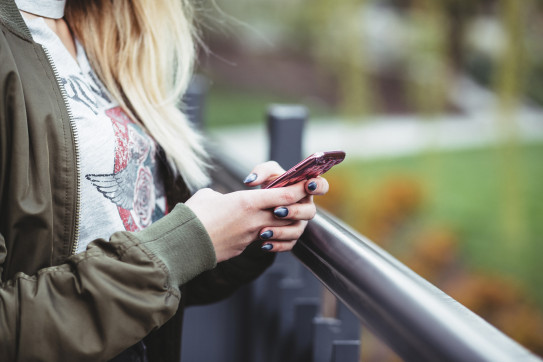
When health and IoT are combined
Although the healthcare sector was slower to adopt Internet of Things (IoT) technologies than other sectors, the Internet of Medical Things (IoMT) is slowly becoming established. The IoMT can help to monitor, inform and notify nursing staff and insurers about a patient’s condition. It also makes it possible to identify issues before they become critical.
The spectacular growth of IoMT devices
According to a report by Allied Market Research, the global healthcare market should hit $136.8 billion by 2021. In 2020, more than 160 million medical devices will be connected to different parts of the body and monitor them to take healthcare decisions. This trend is closely linked to the mass adoption of connected watches. The “Internet of Medical Things” refers to a connected system of medical devices and applications collecting data that is then forwarded to healthcare computer systems via online networks.
The impact of the IoT on the healthcare sector
Remote patient monitoring
The IoT is starting to revolutionise remote patient monitoring, particularly for patients with medical devices to manage. For example, the IoT can facilitate regular blood sugar monitoring or report higher-than-usual blood pressure. Connected devices can send this information in real time to the attending doctor who can step in more quickly. For patients who are at risk of having a heart attack or stroke, the advantages become even clearer.
Improved preventive care
In the US, preventive medicine is underestimated and often neglected by people who think they don’t need regular check-ups. The IoT could make these check-ups more practical by integrating them into daily life.
Workflow optimisation
Healthcare professionals are also really interested in being able to manage workflow optimisation. Nursing staff, doctors and patients can all move around wearing RFID (Radio Frequency Identification) wristbands with a centralised system reporting who needs to be where and when. Ditto for monitoring medical machines or equipment in hospitals: instruments can be located more quickly.
Stock management
Although it’s not the best-known practical application, the IoT also plays a leading role in stock management. Hospitals and medical centres often stock controlled substances, drugs and other equipment; using the IoT helps to keep track of all these items. There are several causes of this spectacular growth, particularly accessibility to portable devices and decreasing sensor costs.
Now that most mass-market mobile devices are equipped with NFC (Near Field Communication) and RFID tags, they can communicate with computer systems. Expansion and access to broadband internet have also contributed to the growth in adoption of the IoMT. The IoMT could be the miracle solution to deal with an overloaded health system, under ever more pressure as our population continues to age.
By 2025, 1.2 billion of the planet’s 8 billion inhabitants will be senior citizens, i.e. the equivalent of the population of India. Senior citizens have more health issues than the rest of the population, which increases costs. As life expectancy increases, so does healthcare costs
A few examples of the IoT in the healthcare sector
As already covered by this blog, the specialist insurance start-up Oscar offers a connected pedometer that gives policyholders Amazon gift vouchers to reward them for keeping fit. Other companies offer IoT solutions for their clients and patients. In 2016, Roche acquired the rights to distribute a long-term implantable continuous glucose monitoring (CGM) system using a 90-day sensor under the patient’s skin. The sensor communicates with a smart transmitter that sends blood sugar levels to a special mobile application on the patient’s smartphone.

At the end of 2017, the FDA (Federal Drug Administration) approved the marketing of the first connected pill in the US. Called Abilify MyCite, the pill contains a drug and an ingestible sensor that is activated when it comes into contact with gastric fluid to detect when the patient takes the pill. The pill then transmits this data to a wearable patch that then transfers it to an application on a paired smartphone.
Then, with the patient’s consent, the data can be consulted by the doctor via a web portal. This means that the doctor can check that the patient has followed the prescription thanks to the Internet of Things. Elsewhere, Takeda is testing the use of an Apple Watch application to help people suffering from major depression, by monitoring and assessing their cognitive functions.

Parallel to that, back in 2016, Roche launched the Coagucheck system that uses Bluetooth to offer patients the possibility of checking the speed at which their blood clots form. Self-testing helps to reduce the risk of strokes. It is the first device of its kind. Being able to transmit results to healthcare service providers also reduces medical centre visits. So a connected medical device provides live reports of actual activity: without these reports, the healthcare professional has to rely on subjective patient reports to know what they’re feeling.
IoMT devices particularly enable remote monitoring of patient behaviour and activity. This provides the physician with real data on whether the therapeutic recommendations are followed and what happens after they leave the medical centre or hospital. This helps a medical team to monitor the progression of an illness and identify information that could have an impact on future care directives and patients.
From the creation of customised pharmaceutical products to determining healthcare directives based on a particular patient’s unique biological systems, the IoMT opens the door to more personalised healthcare for every individual. However, as the number of connected peripherals increases, computer systems will have to work out how to manage the increasing amount of data securely.